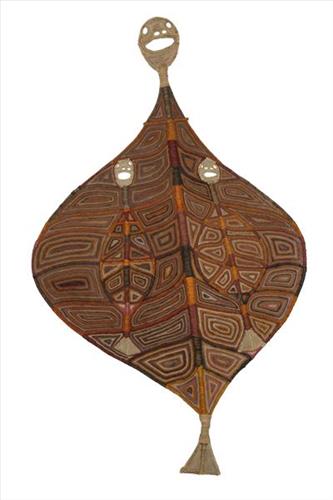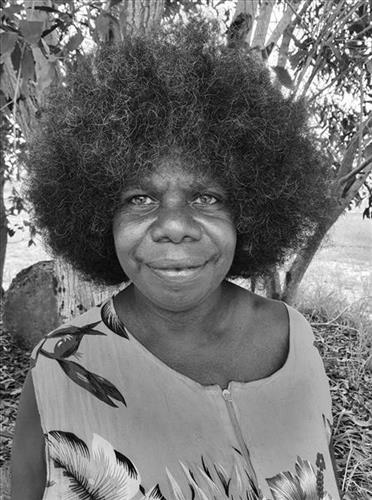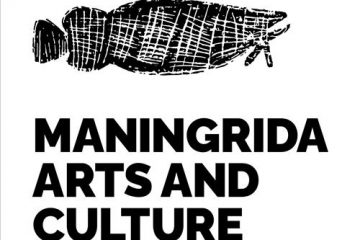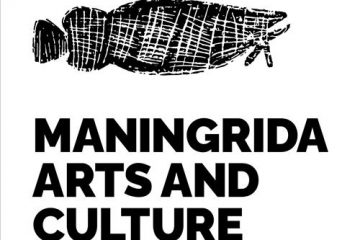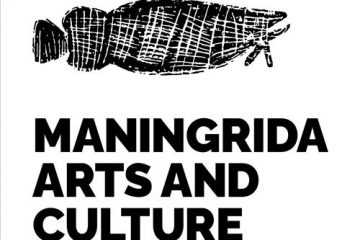111981843374
Yawkyawk (Ngalkunburriyaymi)
This sculpture depicts yawkyawk, a specific Kuninjku word meaning ‘young woman spirit being’. Yawkyawk have fish tails and human torsos and reside in freshwater streams and billabongs. They are sometimes called ngalberddjenj which literally means ‘the woman who has a tail like a fish’. They have long hair which is associated with trailing blooms of green algae (called man-bak in Kuninjku) found in freshwater streams and rock pools. At times they leave their aquatic homes to walk about on dry land, particularly at night.
During the creation period yawkyawk travelled the country in human form, morphing into different natural features which today mark important sacred sites in the landscape. Marrngamarrnga depicts Ngalkunburriyaymi, a yawkyawk specific to a series of waterholes called Kubumi near late husband’s outstation, Yikarrakkal. He gave Marrngamarrnga permission to depict this important Ancestor figure and she continues to live and work on his homeland. She often depicts Ngalkunburriyaymi pregnant with twins or triplets which relates to an important Kuninjku Ancestral narrative
Today the Kuninjku believe that ngalkunburriyaymi are alive and well and living in freshwater sites in a number of sacred locations. The Kuninjku also believe that ‘clever’ man (magicians with mystical powers called in Kuninjku na-kordang) may take these spirits as wives. The father of Mandarrk, a well known artist who resided in the Central Arnhem area, is said to have had such a spirit as a wife. Unfortunately, it is said, she failed one day to return from being sent to fetch water from the river, and returned to her kin. The ngalkunburriyaymi also have husbands and children of their own kind. Their sites are usually shared with the rainbow serpent ngalyod. Some have ritual importance, for example in some depictions, the yawkyawk spirit holds ceremonial string, just like the lengths of string women hold between both hands today during certain public ceremonies.
There are at least three major ngalkunburriyaymi sacred sites that are well known in the area south and south-west of Maningrida. One site Bolerrhlerr is on the Mann River at a place near Yikarrakkal Outstation where the Mann River has rugged rocky banks and clefts beneath stone overhangs in the water. Another very similar site further west in the Kumadderr River district is surrounded by a number of small but very old rock art sites and has become known in English as ‘Dreaming Lady’. A third site is a major yawkyawk dreaming place which is so significant that the traditional clan custodians have set up an outstation community near the site. The identify of this group is very much related to their yawkyawk dreaming for which they have spiritual and practical responsibility. This group, known as the Dangkorlo clan, are well known for their bark paintings and sculptures of yawkyawk. Both of Kubarkku’s wives are members of the Dangkorlo clan.
